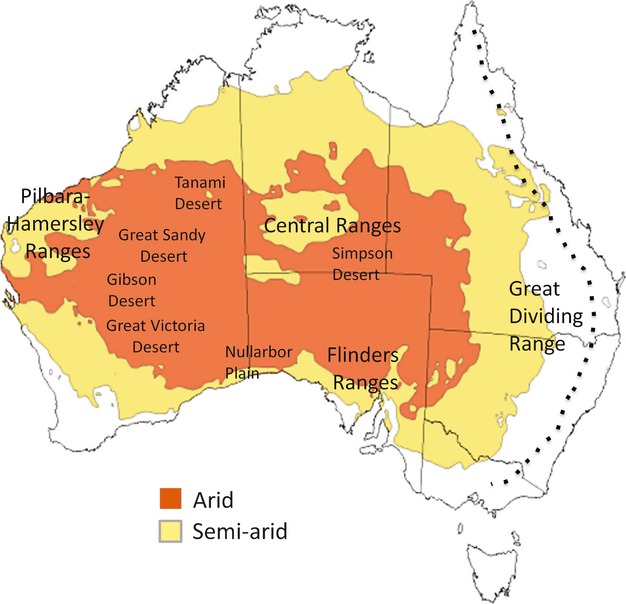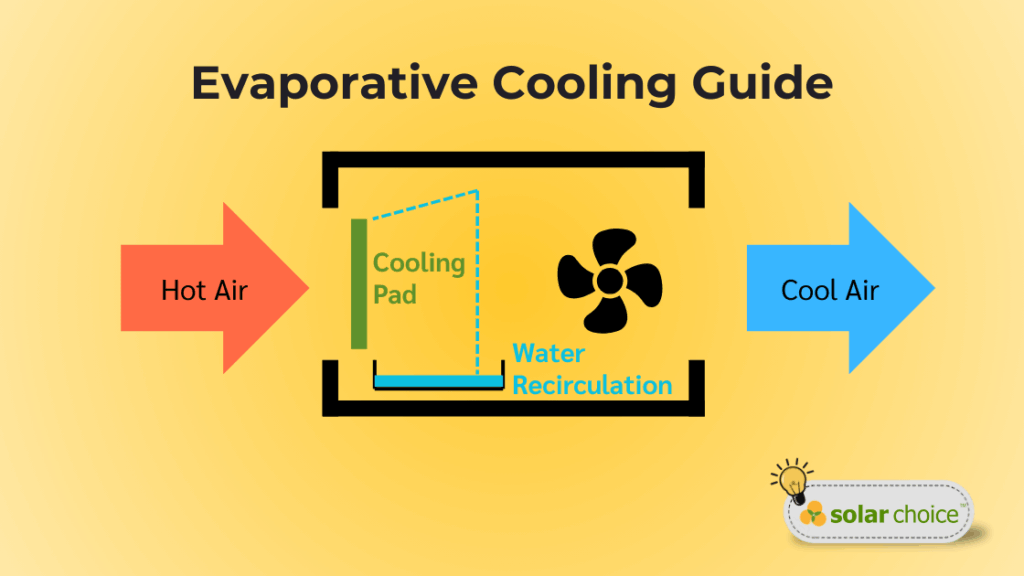For Australian homeowners, choosing the right cooling system is a big decision. With hot summers stretching across most of the country, air conditioning isn’t just about comfort — it’s about affordability, efficiency, and climate suitability.
One alternative to traditional refrigerated (reverse cycle) systems is evaporative air conditioning. Known for its ability to cool air naturally with water, evaporative cooling can be a cost-effective and eco-friendly option in the right environment. This guide explains what evaporative air conditioning is, the types available, key pros and cons, installation requirements, and how well it performs across different Australian climates.
What Is Evaporative Air Conditioning?
Evaporative air conditioning — often called “swamp cooling” overseas — is a system that cools air by passing it over water. The principle is simple: as water evaporates, it absorbs heat, lowering the temperature of the surrounding air. In practice, this means outside air is drawn into a cooling unit, passed over damp filter pads, cooled through evaporation, and then blown into your home.
How it works step by step
- Air intake: Hot, dry outside air is drawn into the outdoor unit using a fan.
- Evaporative cooling pads: The air passes over thick filter pads kept wet by a water distribution system.
- Evaporation process: As the hot air moves across the wet pads, the water evaporates, extracting heat and cooling the air.
- Delivery indoors: The cooled, moist air is pumped into the living spaces via ducts or through the portable unit’s outlet.
- Exhaust of warm air: Because evaporative systems bring in fresh air continuously, windows or doors need to be left slightly open to allow warm indoor air to escape.
Think about how you feel stepping out of a swimming pool on a hot day: the breeze feels noticeably cooler against your damp skin. That’s evaporation at work — water molecules absorb heat from your body as they evaporate, producing a cooling effect. Evaporative air conditioning applies the same principle to cool entire rooms or houses.
Lower energy usage than reverse cycle air conditioners
Unlike refrigerated systems that rely on compressors and refrigerants, evaporative units mainly use fans and water pumps. This means they generally consume far less electricity. For example, a ducted evaporative system for a whole house may use about one-third the power of an equivalent refrigerated ducted system.
Evaporative cooling systems bring in fresh air
Another distinguishing feature is that evaporative systems continuously cycle fresh outdoor air through the house. This is different from reverse cycle systems, which recirculate indoor air. For people sensitive to stale or dry air, this constant airflow can feel fresher and more comfortable.
Where in Australia is Evaporative Cooling Best Suited?
Evaporative air conditioning is most effective in hot, dry climates where humidity levels are low. In these conditions, the evaporation process can reduce air temperature by 8–12 °C, delivering noticeable comfort throughout the home.

The best-suited regions include Adelaide, Perth, Canberra, and many inland areas of New South Wales, South Australia, and Western Australia. These locations experience long, dry summers where humidity often drops below 30–40%, creating ideal conditions for evaporative cooling. Households in these cities often choose ducted evaporative systems because they can efficiently cool an entire home while using far less electricity than refrigerated systems.
By contrast, humid coastal climates such as Sydney, Brisbane, and much of coastal Queensland and New South Wales are less suitable. High humidity reduces the ability of air to absorb more moisture, making evaporative cooling less effective and sometimes uncomfortable. In the tropical north (Darwin, Cairns), evaporative systems are generally not recommended, as humidity is persistently high.
For homeowners in regional inland towns, evaporative cooling can be an affordable and sustainable choice, though water availability and dust conditions should also be considered. In short, the further inland and drier the climate, the better evaporative cooling will perform in Australia.
Air Conditioning Verses Evaporative Cooling
| Feature | Air Conditioning | Evaporative Cooling |
| Cooling Method | Uses refrigerant to remove heat and moisture from the air. | Cools the air by evaporating water into it. |
| Energy Consumption | Typically uses more energy due to the refrigerant cycle. | Much more energy-efficient, uses less power. |
| Effectiveness in Humid Climates | Very effective in all climates. | Less effective in high-humidity conditions. |
| Installation Complexity | Requires professional installation, often involving ducts or refrigerant lines. | Generally easier to install, especially portable models. |
| Maintenance | Requires regular maintenance (e.g., cleaning filters, servicing refrigerant). | Requires frequent pad cleaning and water management. |
| Initial Cost | Higher upfront cost for purchase and installation. | Generally lower upfront cost. |
| Air Quality | Air is dehumidified, which may be beneficial in very humid areas. | Increases humidity in the air, which can be uncomfortable in humid climates. |
| Noise Level | Relatively quiet, especially split systems. | Can be noisy due to fan operation, especially portable units. |
| Ideal Use | Ideal for hot, humid, or temperature-controlled environments. | Best for dry, hot climates where humidity is low. |
| Environmental Impact | Typically uses refrigerants that may have an environmental impact. | More eco-friendly as it uses water and does not rely on harmful chemicals. |
Compare quotes from local, reputable Air Con installers
Installation and Maintenance Requirements of Evaporative Cooling
Installation varies depending on the type of evaporative air conditioner chosen.
Ducted evaporative systems
- Rooftop unit: Installed centrally on the roof, usually on a metal base or frame. Requires adequate roof space and structural support.
- Ductwork: Flexible or rigid ducts run through the roof cavity, delivering cooled air to ceiling vents in each room.
- Electrical connection: A dedicated power circuit is required, though energy demands are lower than ducted refrigerated systems.
- Plumbing: A water line needs to be connected to the rooftop unit to keep the pads continuously wet.
- Exhaust requirement: Windows or doors must be left open a crack to allow airflow out, ensuring effective cooling.
- Maintenance access: The roof unit must be accessible for cleaning, pad replacement, and seasonal servicing.
Portable evaporative coolers
- No professional installation required.
- Simply plug into a power point and fill with water.
- Need to be placed near an open window/door to allow cross-ventilation.
Costs and maintenance
Ducted evaporative systems are generally cheaper to install than ducted refrigerated systems, but the cost will vary depending on home size and ducting complexity. Ongoing maintenance includes cleaning or replacing pads, descaling the water pump, and flushing the system to prevent mineral build-up. Seasonal servicing before summer is recommended to ensure hygiene and efficiency.
Pros and Cons of Evaporative Cooling
| Pros | Cons |
|---|---|
| Low running costs – uses less electricity than refrigerated air conditioning | Climate dependent – much less effective in humid conditions |
| Eco-friendly – no refrigerants, lower greenhouse emissions | Requires open windows/doors – not suitable for fully sealed homes |
| Fresh air supply – continuously brings in outside air rather than recirculating | Adds moisture indoors – may feel damp in some climates |
| Lower upfront cost (for portables) – budget-friendly entry options | Cooling limited – cannot achieve the very low temperatures of reverse cycle systems |
Conclusion – Evaporative Cooling Is Not For Everyone
Evaporative air conditioning offers a natural, energy-efficient way to cool Australian homes — but it is not going to be the best option everyone. For households in dry inland cities like Adelaide or Perth, it can provide reliable, low-cost cooling with the added benefit of fresh airflow. For those in humid or tropical climates, a reverse cycle system is usually more practical.
Compare quotes from local, reputable Air Con installers
FAQ
Is evaporative cooling as good as air conditioning?
Evaporative cooling works very well in hot, dry climates but is less effective than refrigerated air conditioning in humid areas.
What is a downside of evaporative cooling?
The main downside is that it loses effectiveness in humid conditions and requires open windows or doors for airflow.
Is evaporative cooling cheaper than AC?
Yes, evaporative cooling typically uses far less electricity than refrigerated air conditioning, making it cheaper to run in the right climate.
- APsystems Battery Review: An Independent Assessment by Solar Choice - 18 December, 2025
- Running Cost of Air Conditioners – Explained - 7 October, 2025
- Air Conditioner Rebate South Australia: What You Need to Know - 19 September, 2025
